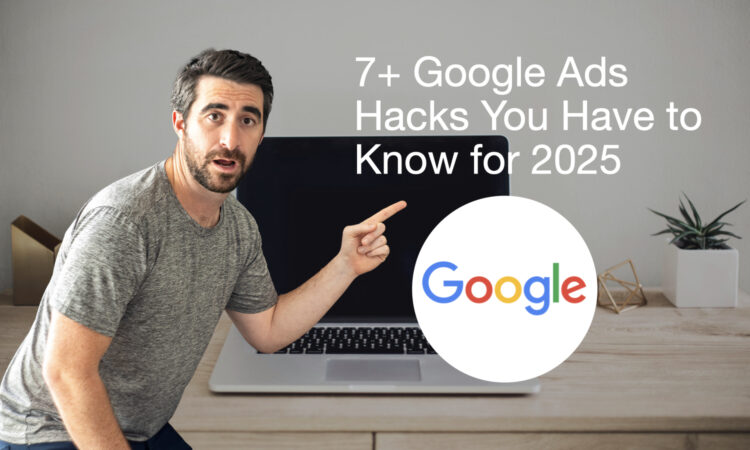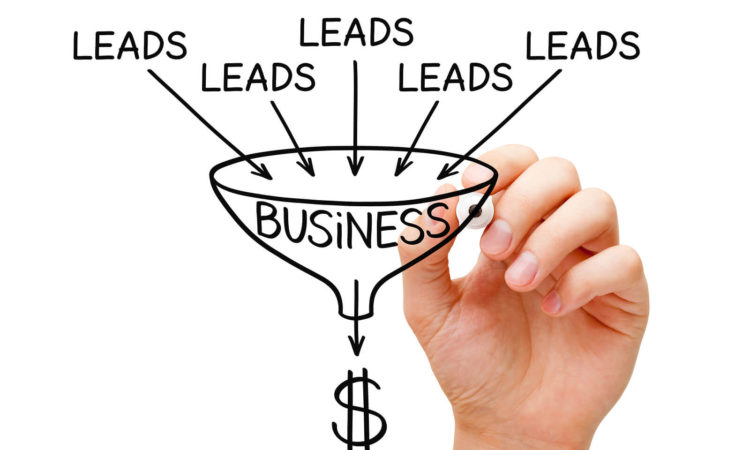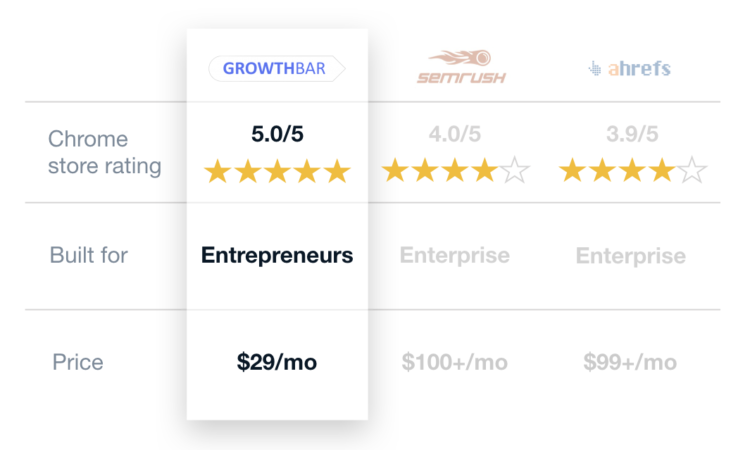- How to Grow a SaaS (Software) Business FAST - February 10, 2025
- 6 Advanced SEO Tips to Dominate the Search Rankings in 2025: Informed by Our Biggest Clients - January 17, 2025
- 7 Advanced Tips for Companies Spending $1M+ on Google Ads - December 10, 2024
Running Google Ads with a $1M+ monthly budget?
You already know the stakes. Every wasted dollar makes your teams’ lofty (and maybe overambitious) targets slightly further out of reach.
I work on accounts that spend upwards of a million dollars per month on Google Ads. My agency works with companies like SentinelOne, Smartrecruiters, Cube, HiBob, Point One Navigation, and a $2 billion public healthcare company (whose name I’m not allowed to say).
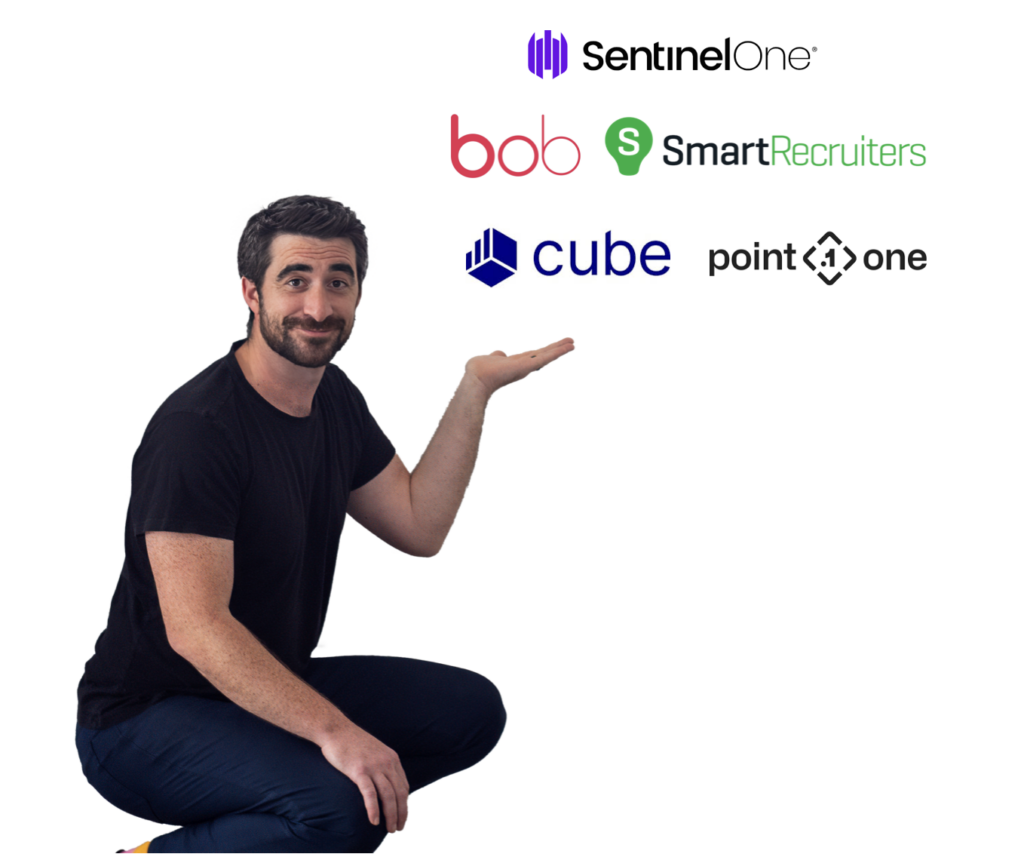
We’re in the trenches every day, turning ad dollars into high-intent leads and measurable ROAS.
Mediocre advertisers waste ad dollars. We don’t.
This list contains some of our favorite simple tactics to deploy to improve your Google ads efficiency. It includes a list of 40,000 domains you can remove from your Performance Max campaigns to reduce spammy clicks.
Here are the must-know tips for this year….

🚀 Do you like what you see? We’re an elite paid search agency focused on the only metrics that matter – qualified leads and revenue for your business.
Table of Contents
1. Use Portfolio Bidding (Even on a Single Campaign)
Portfolio bidding enables you to group multiple campaigns, ad groups, and keywords to optimize return on investment through a shared budget and strategy. It’s a strategy that’s been around for a while – and for certain account structures, it works quite well.
Here’s what you might not know: portfolio bidding allows you to declare a maximum CPC value in addition to a CPA target. You can’t do this in a standard automated bidding campaign.
And in true Google fashion, they hide the setting. Navigate to “advanced options” in the settings of your portfolio bid strategy.
Why is this an incredible feature?
Google hid the ability to cap CPCs in automated bidding campaigns years ago… so that they can make sure to spend your whole budget, even if its one click that costs $150. Heck, nobody would ever buy those ridiculously expensive clicks if everyone had the ability to cap CPCs.
We use this strategy on campaigns for clients when we see a search term report that’s littered with one-off expensive clicks. From my experience, this tends to happen in 1) expensive auctions, and 2) competitor conquesting campaigns.
📚To summarize: This hack enables you to use CPC caps on automated bidding campaigns, which will make campaigns cheaper and ROI higher.

🚀 Do you like what you see? We’re an elite paid search agency focused on the only metrics that matter – qualified leads and revenue for your business.
2. Remove Sites from Performance Max to Increase Quality
We used to get messages like this from clients:
Not any more.
Performance Max campaigns are notorious for click spam. Particularly if you’re not optimizing to a down-funnel metric like sales qualified leads or revenue, you’re likely getting a ton of bot traffic and conversions from Performance Max. What a waste.
There’s two things you can do to solve this:
- You can optimize toward a down funnel metric like revenue or sales qualified leads.
- Or, you can exclude the junky websites that drive those leads.
The problem is, it’s really hard to figure out which sites are junk. It’s even harder to keep up with the 10s of thousands of sites producing those spam leads! You’ll waste tons of money before you figure out which sites to exclude.
Luckily, we have the answer. We’ve harvested a site exclusion list to get rid of the:
- Mobile gaming companies
- Bot advertising sites
- NSFW sites
- And more
Here’s a junk exclusion list of 40,000 sites.
Once you have your hands on that list you’ll exclude them from your entire account in the Content Suitability section of Google Ads. Of course, it takes forever to upload all of them in batches of 5,000 (since Google wants you to spend on this crap), but it’s worth the effort. Thank me later!
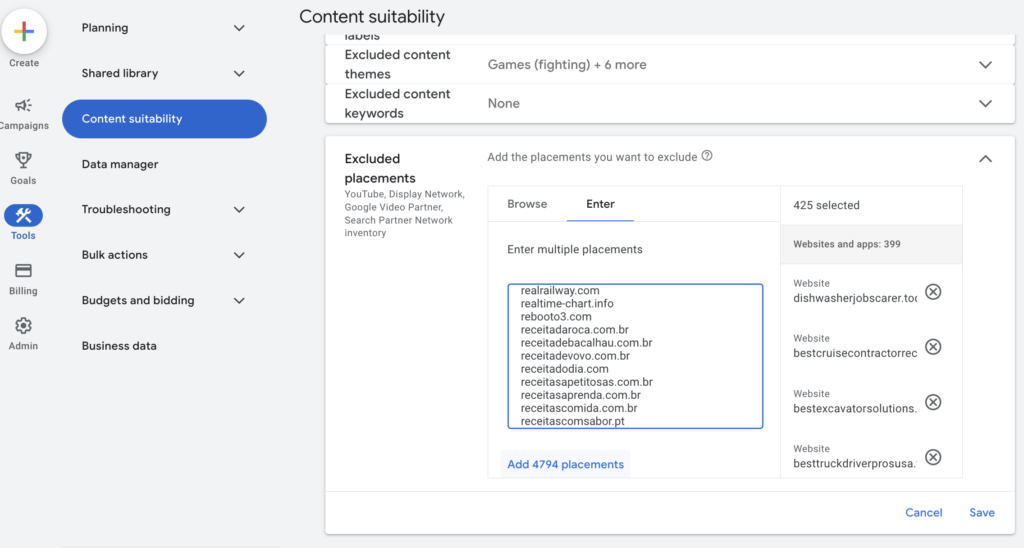
📚To summarize: PMax is an incredible ad unit. There’s so much scale, but so much junk. Use site exclusions to remove the junk and increase your return on ad spend.
3. Remove Brand Searches from Performance Max
Here’s another Performance Max tip…
Long ago, Ebay pretty much proved that branded search (PPC) campaigns suck; bidding on your own brand search terms tends to be non-incremental.
If I’m searching for “nike shoes,” Nike shouldn’t have to pay for me to visit their website.
In reality, there’s way more nuance to the branded search debate than that, but still, many companies don’t like spending their precious ad dollars on people searching for their brand term.
In 2025, Google Ads has significantly enhanced its brand exclusions feature, which now applies to both search and Performance Max campaigns.
We love this feature for two reasons:
- Running incrementality tests
- To eliminate brand searches altogether so that PMax campaigns are truly incremental
This allows advertisers to opt out of displaying ads for specific brand-related searches, whether they pertain to your own brand, a competitor’s, or even a partner’s. This is a great thing, because Google knows they can get you to spend a lot of money on brand searches in Performance Max. Smarten up and you can avoid it!
To take advantage of this feature, you simply need to navigate to the campaign settings of your search or Performance Max campaign and create a “brand list” of names you want to exclude. Google will then prevent your ads from appearing in any searches associated with those selected brand terms.
In true Google fashion, they hide this feature. See a screenshot below to locate it!
This means no more spending on crappy brand terms that are not incremental!
You can also use the “content suitability” section of Ads to remove “parked domains” and “below the fold” placements.
📚To summarize: PMax campaigns are huge this year. But if you want to make them work affordably, brand exclusion is a pretty good feature to activate.

🚀 Do you like what you see? We’re an elite paid search agency focused on the only metrics that matter – qualified leads and revenue for your business.
4. Use Manual Bidding or Seasonal Adjustments at the End of Promos
You know by now that automated bidding often wins in head-to-heads with manual bidding strategies.
Quite simply, Google’s algorithm is smarter than advertisers. I like to think I’m pretty smart – but Sundar Pichai and his staff of Stanford MBAs probably have me beat.
But that’s ok. For now, I’ll continue with automated bidding campaigns. Except in two scenarios:
- The scenario I described in #1 of this post. Using portfolio bidding with a max CPC “modifier”
- When I’m executing a campaign that’s coming off of a promotional time period
As you wrap up your promotional campaigns, it’s crucial to transition smoothly back to your standard bidding strategies or consider implementing seasonal adjustments to maintain consistent performance.
Manual bidding can be an effective tool for regaining control over your ad spend and ensuring you maximize ROI as seasonal demand wanes. Sundar’s (Google’s) algorithms are good, but if you don’t use a seasonal modifier or CPC bidding after a campaign is done, your campaigns will continue spending as if conversion rate is inflated. This is wasted budget!
📚To summarize: Anticipate fluctuations in user behavior and modify bids accordingly. This could be during seasonal periods, the end of promotions, or when major site or funnel changes go live. Head those moments off with manual bidding! By adopting a strategic approach, you’ll be well-prepared to maximize your ad’s impact as market conditions shift.
5. Target Return on Ad Spend is the Best Bidding Method
I’ve talked about lifetime value of a customer before and why it’s basically the most important metric to any business.
The problem is, Google is blind to your customer LTV unless bottom-of-funnel data (ideally, revenue) is making its way back into Google Ads – either via an integration with your CRM or via manual upload.
We love target return on adspend (tROAS) as a bidding method. That’s because you’re harnessing Google’s algorithm to bid for you – and bid toward the highest value customers. It’s something no other automated bidding method is capable of.
Using it will make you able to outbid your competition because you’ll only be bidding on the highest value clicks.
The good news: if you’re using a standard CRM or site platform like HubSpot, Salesforce, or Shopify, it’s pretty easy to send revenue data back to the Google Ads platform. Usually a direct integration will do the trick.
In HubSpot, it’s quite simple. And you’ll get nifty revenue and contact data by campaign directly in your HubSpot dashboard to boot!
Not to worry, if you can’t get all the way to revenue data, I’d advise you still use automated bidding (max conversions or target CPA) to optimize toward the furthest downfunnel metric you can – but only a metric with 15+ conversions per month – which is what Google needs to appropriately optimize with automated bidding.
📚To summarize: Lifetime value (LTV) is a crucial business metric, but Google Ads can’t leverage it unless revenue data flows back via CRM integration or manual uploads. Using target return on ad spend (tROAS) helps Google’s algorithm bid for high-value customers, enabling you to outbid competitors on valuable clicks.

🚀 Do you like what you see? We’re an elite paid search agency focused on the only metrics that matter – qualified leads and revenue for your business.
6. Exact Match vs Broad Match Campaigns
Bing (Microsoft) Ads has a notoriously bad broad match.
But Google Ad’s broad match isn’t too bad. Sure you’ll capture derivative search terms that stink, but in conjunction with automated bidding, broad match campaigns can work well.
In big spending accounts we like to run broad match campaigns against exact match campaigns (both on automated bidding). The results are almost always surprising.
“But Mark won’t my campaigns compete with each other?” No, that doesn’t happen – Google has said so itself.
In any case, check out this big spending client’s data (removed campaign names for confidentiality reasons).
- Campaign 1 with exact match-only search terms yielded a $113 CPA, but the broad match version of that campaign saw conversions at just an $87 CPA.
- Campaign 2 with exact match-only search terms yielded a $118 CPA. The broad match version saw conversions at a $120 CPA.
So in each case, the results are completely different. That’s why we usually test this with larger accounts.
📚To summarize: Test broad match vs exact match with an automated bidding strategy.
7. Brand Incrementality Test
Remember I spoke about the famous Ebay brand PPC study? They found that bidding on brand clicks wasn’t incremental.
But that doesn’t mean it’s the case for every company.
Ebay is a huge brand with tons of existing recognition. Maybe yours doesn’t have that same notoriety. Or maybe competitors are bidding on your brand search terms. There are some cases in which it makes sense to bid on your own brand terms.
We find that some companies should be spending on their brand and some shouldn’t. Usually the ones that should are running ads in a competitive space in which competitors are running “conquesting” campaigns against them.
But how do we know for sure?
If you’re spending a lot on your brand, run an incrementality test and use your search console + GA4 data to tell you how much traffic you’re actually losing to competitors when you turn off brand ads.
Set up a report like this in GA4:
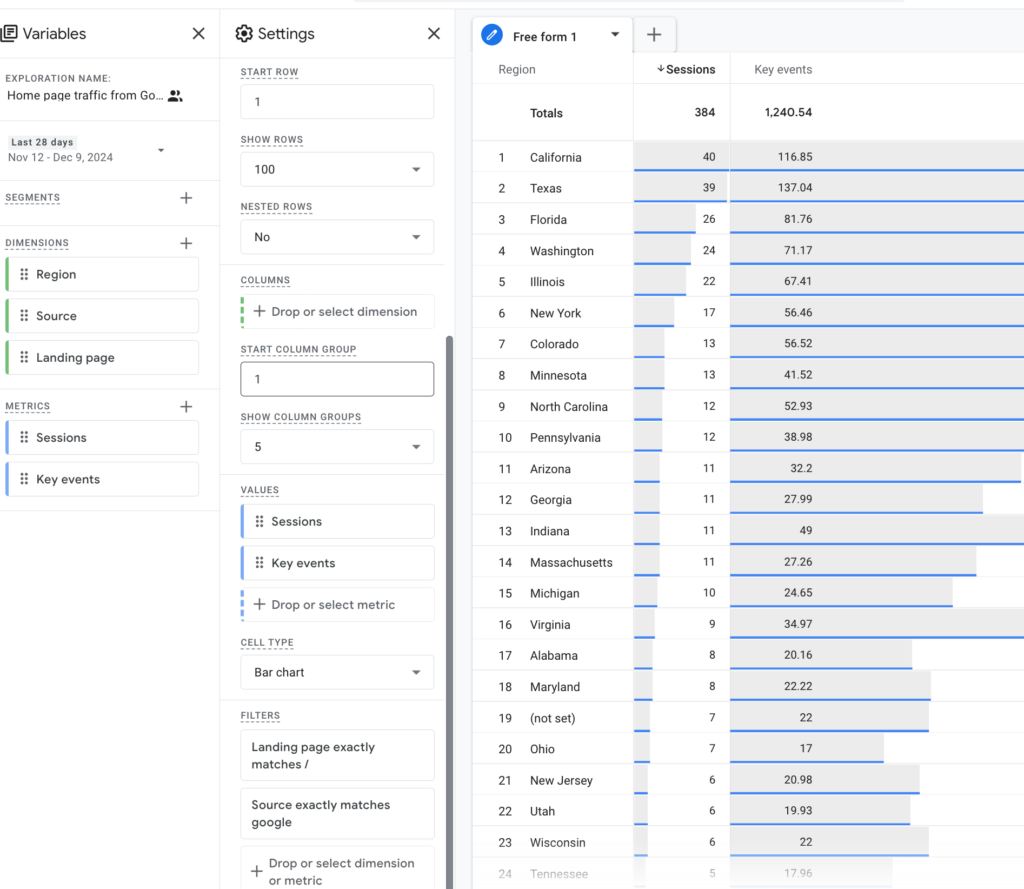
Then, split your traffic into two equal groups by geography (if you’re advertising in the US, you can split by “Region”, which is equivalent to “State”).
Exclude one of these groups of geos (representing 50% of your traffic/conversions) from your brand campaign for at least 1 month.
If you find that you’re truly losing brand conversions to competitors because of their Google Ads it does make sense to spend on your brand search terms. You can then calculate your cost per incremental conversion.
Easy enough, right?
📚To summarize: Run a brand incrementality test to see if you actually should be spending on your brand keywords. The results may surprise you.
Conclusion
In a world where every click counts and every dollar matters, you can’t afford to play small with Google Ads. The strategies I’ve shared here aren’t just nice-to-haves—they’re the battle-tested tactics my team and I use every day to help industry leaders win big in the ad trenches.
Want to stop wasting ad dollars and start dominating your market? Let’s make it happen. Reach out to me at [email protected]—because mediocre advertisers waste money, but we turn ad spend into ROI. Game on, 2025. 🚀

🚀 Do you like what you see? We’re an elite paid search agency focused on the only metrics that matter – qualified leads and revenue for your business.

